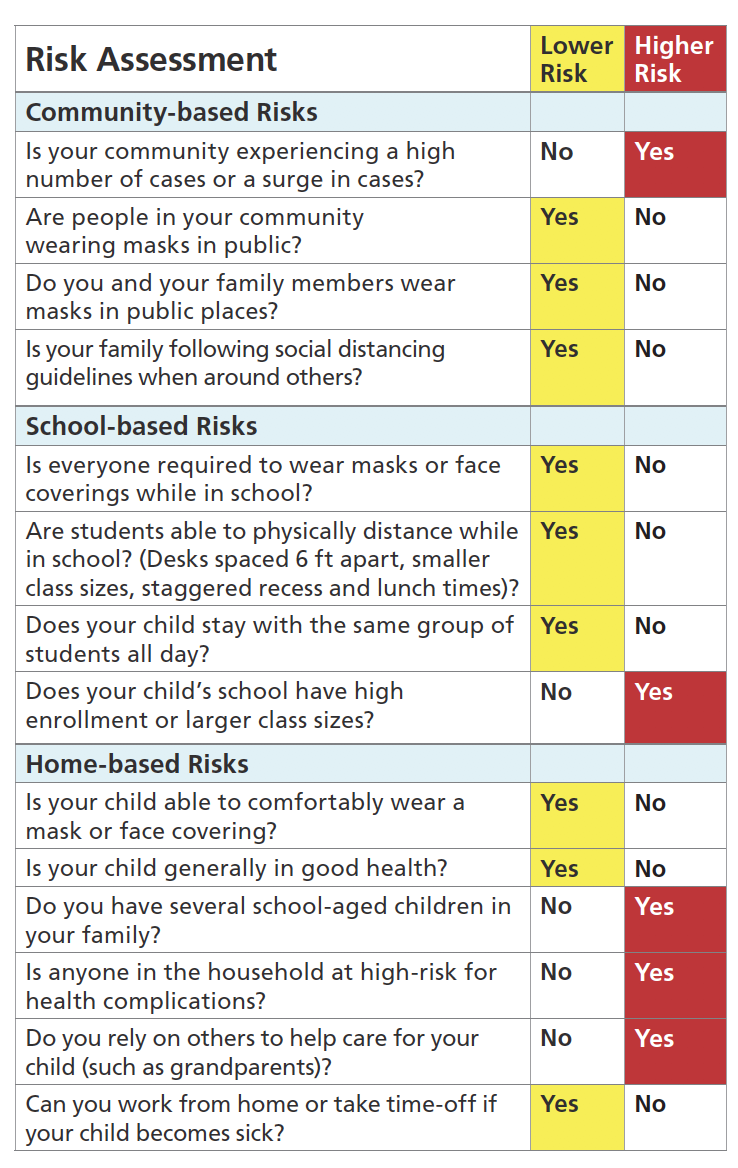To date, school-aged children and adolescents are less likely to have symptoms or become seriously ill from COVID-19. While this is good for children, it’s important to remember:
- Children with COVID-19 can become very ill. In addition to possible flu-like symptoms, some children get MIS-C or Multisystem Inflammatory Syndrome in Children. This is a new and serious health condition related to COVID-19.
- Children with COVID-19 can unknowingly spread the infection to parents, grandparents, teachers, neighbors, and others.
If someone in close contact with your child becomes sick with COVID-19, your child will have to quarantine for 14 days.
If your child has a confirmed case of COVID-19, they must self-isolate. Self-isolation means to stay home and avoid others. During self-isolation, your child should only leave home to get medical care.
Self-isolation can end after:
- At least 10 days since symptoms first appeared and
- At least 24 hours with no fever without fever-reducing medicines and
- Symptoms have improved
Also, anyone living with your child, such as you and any brothers or sisters, will also have to quarantine. The quarantine ends 14 days after the last contact with the person while they were sick. As a parent caring for a child with COVID-19, this could mean having to quarantine for 3 to 4 weeks or longer.
